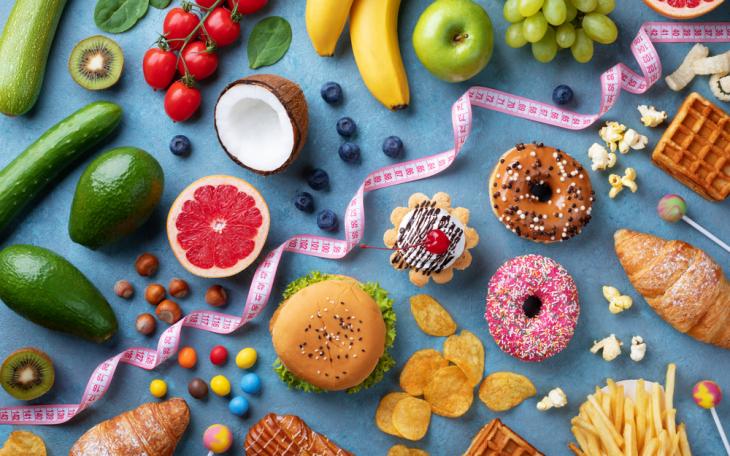Mandatory Calorie Labelling: A recipe for disaster?

By Emily Chen
As of 6 April, all restaurants with 250 members of staff or more are legally obligated to declare the caloric content of each meal on their menus and websites. The supposed motivation behind the legislation is to ‘improve the nation’s health and tackle obesity levels’, however there is a large demographic for which these new rules may be somewhat problematic. Below is a recipe for making you realise that this legislation may in fact be unfit for purpose.
Step One. Define calories.
A calorie is a unit of measurement, indicating the amount of energy needed to raise the temperature of water through 1 degree Celsius. This number bears no bearing on the quality of the food, and what nutritional offering it has. Avocadoes are a high calorie food, but are also high in magnesium, B6, vitamin C, vitamin E and fibre. Further, consumption of this fruit has been associated with better diet quality and lower metabolic syndrome risk. This is but one example of how caloric content does not accurately represent how ‘healthy’ a food is.
Further, the government outlined that ‘Displaying calorie information may also encourage businesses to provide lower calorie options for their customers’. Some common ingredients in low calorie alternatives have been associated with health risks. The most widely known example, is the connection between aspartame (popular sweetener in low calorie carbonated beverages) and cancer. Consequently, it is unclear how using calories as a metric for improving the nation’s ‘health’ will have the desired effect.
Step Two. Consider consistency
For restaurants that do not use assembly line cooking (Wasabi, All Bar One, Bills’ Restaurant, Café Rouge, Pho Restaurants, Wagamama) the calories on the board are unlikely to reflect the exact number of calories on the customer’s plate. Chefs may make multiple servings of a dish at once, then divide them between customers. Hence, there will not be the exact same portion sizes (and same calories) in each dish. Further, chefs rarely use measuring utensils when pouring oil into a pan when frying. As chefs are not automatons, they will not be using the exact set amounts of ingredients in every dish and thus, restauranteurs will not necessarily be making ‘informed’ choices when referring to the calorie menus.
Speaking of consistency, the strategy seems to have been applied somewhat arbitrarily. If the government is entirely committed to the idea that calories will help individuals lose weight, why would they not require calorie guidelines on one of the most calorific things on the menu? When one considers that there are 780 calories in a Long Island Iced Tea, and three Jaffa Cake biscuits worth of calories in a standard 175ml glass of wine, it is not as if their caloric content is negligible. For context, in light of the new legislation, Côte Brasserie is planning on keeping 38% of its menu below 700 calories. Therefore, one drink at Côte could have the effect of doubling your caloric intake without you knowing. The lack of consistent calorie labelling limits the scope of advantages intended with this legislation.
Step Three. Question how many calories you should be eating.
The new guidance makes restaurants statutorily obligated to say that ‘adults need around 2000 kcal a day’, a fact which is sweeping and inaccurate (s5(2)(c)). This is because the number of calories one needs changes significantly depending on one’s regular physical activity levels, gender, age, amongst a plethora of other factors. As a result, unless an individual knows how many calories they should be eating, how will they know if the number of calories in a takeaway is too much?
Step Four. Consider those who may have complex relationships with food.
A recent study suggested that over 700,000 people in the UK have an eating disorder, and even that was noted to be an underestimate as many cases do not present to health services. Due to the nature of many of these mental health conditions, eating disorder charity Beat Chief Executive asserted that “Requiring calorie counts on menus risks causing great distress for people suffering from or vulnerable to eating disorders, since evidence shows that calorie labelling exacerbates eating disorders of all kinds”. Hence, the approach the government has taken risks exacerbating the health of some, in the hope that it will support others.
Step Five. Source alternatives!
One alternative (amongst many) that may help with the nation’s obesity problem is to increase NHS expenditure on binge eating disorder. At this time, the NHS offers a ‘guided self-help programme’, therapy, and medication. If this was more widely available, more people struggling with their weight could make actually informed decisions about their weight loss journey. The BBC shared an article about overeating, wherein one woman shared her story of food addiction. Her feelings made it seem that many people who struggle with their size are not ignorant about calories, but instead have deeper struggles that prevent them from losing weight.
This is but one idea that the Government should consider if it wants to meaningfully ‘improve the nation’s health and tackle obesity levels’. In the meantime, people should be allowed to have their cake and eat it without caloric concerns.








